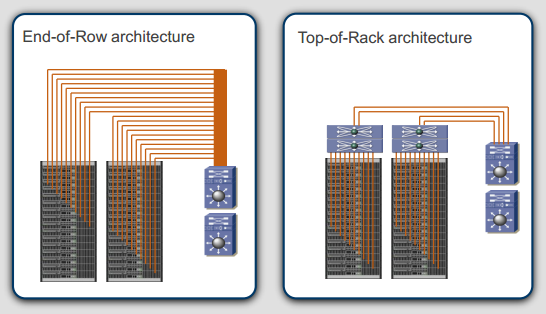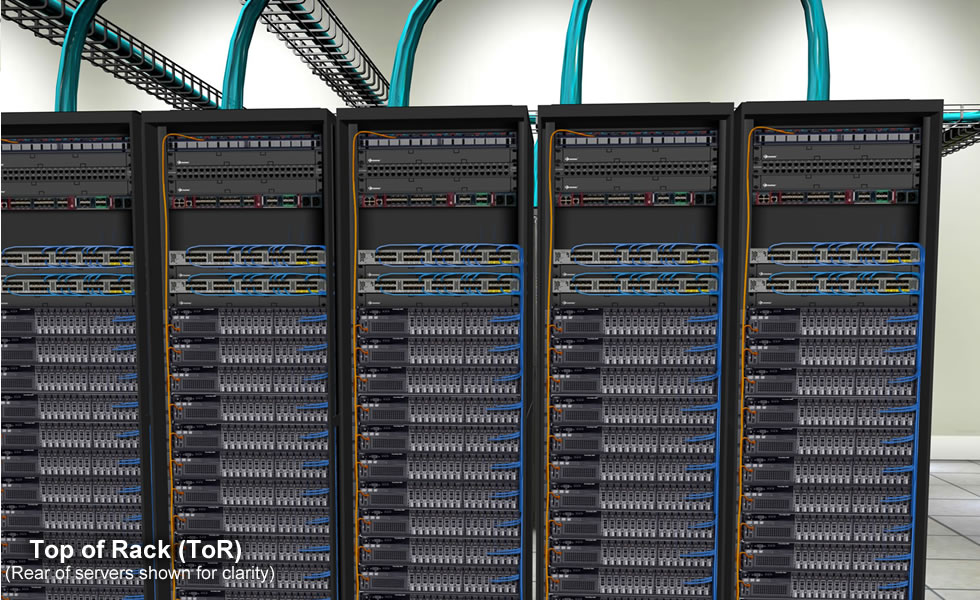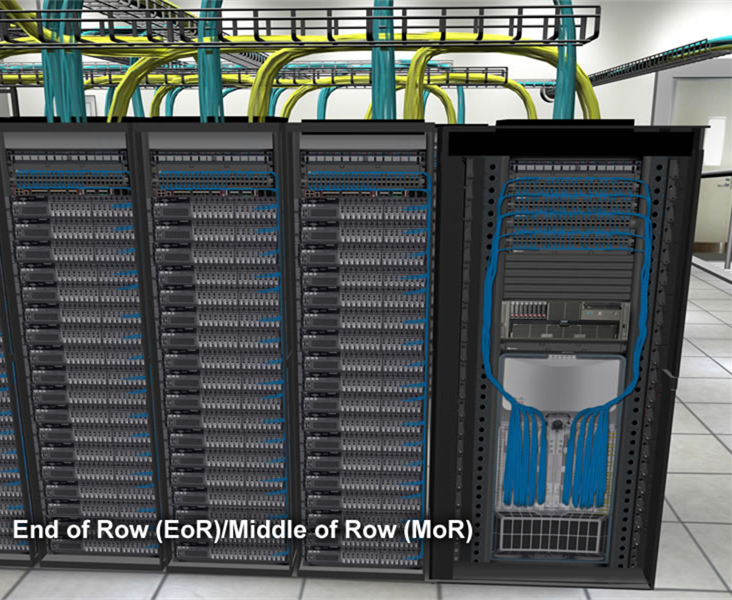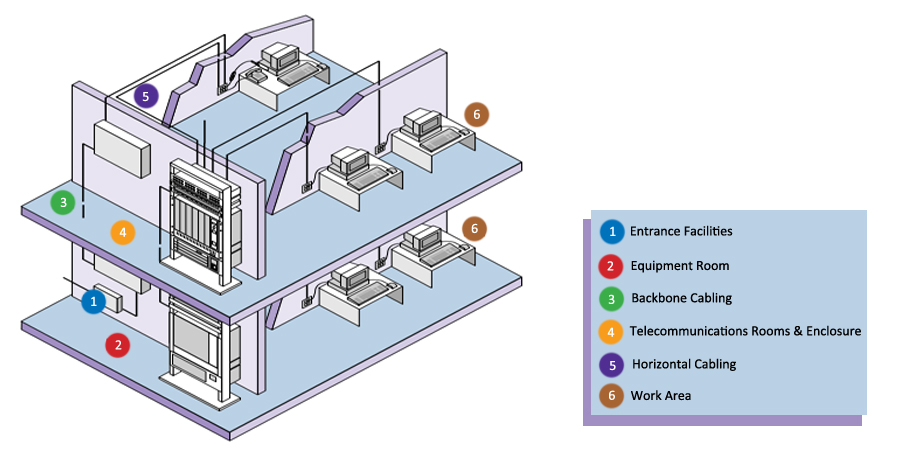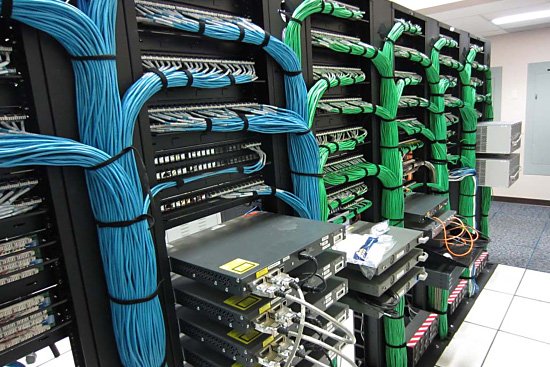At one time, data centers were discrete entities consisting of independent silos of computing power and storage bridged together by multiple networks. Servers were consolidated from time to time, but they still used discrete and independent networks such as Token Ring, Ethernet, Infiniband*, and Fibre Channel.
Then along came virtualization and cloud computing. They brought with them a variety of storage technologies and, more recently, Software Defined Networking (SDN). Collectively, these technologies are providing dramatic gains in productivity and cost savings. They are also fundamentally changing enterprise computing and driving a complete rethinking of enterprises’ networking architecture strategies.
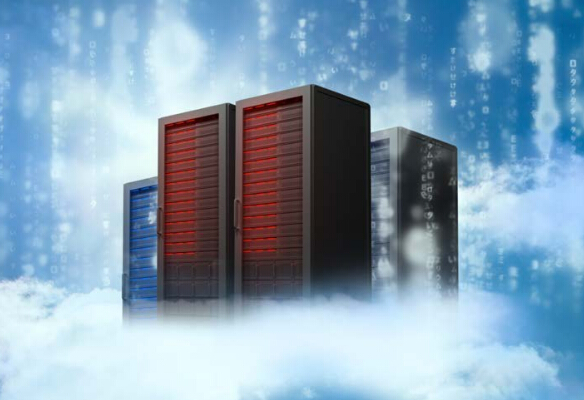
As virtualization continues to take hold in data centers, the silos of computing, network, and storage that were once fixtures are increasingly being replaced by resource pools, which enable on-demand scalable performance. Hence, as application needs grow, the infrastructure can respond.
Unfortunately, this is a two-edged sword. Virtualization has increased server utilization, reducing the once-prevalent server sprawl by enabling enterprises to do more with less, and simplifying and maximizing server resources. But it has also driven the demand for networking bandwidth through the roof in complexity and created a major bottleneck in the system.
For some enterprises, server virtualization alone isn’t enough and they have deployed a private cloud-based infrastructure within their data center. With this comes the need to not only scale resources for a specific application but also for the data center itself to be able to scale to meet dynamic business needs. This step requires storage and networking resources to move away from the restriction of dedicated hardware and be virtualized as well.
This next step in virtualization is the creation of a virtual network that can be controlled and managed independent of the physical underlying compute, network, and storage infrastructure. Network virtualization and SDN will play a key role, and network performance will ultimately determine success.
Today, discrete data center networks for specific components, such as storage and servers, are no longer appropriate. As companies move to private cloud computing, in which systems are consolidated onto fewer devices, networks must be simpler to deploy, provision, and manage.
Hence, 1GbE connectivity is no longer enough. Think about it: Servers are getting faster, and enterprises are running a growing number of Virtual Machines (VMs) that compete for existing I/O on each server. An increased amount of data must be processed, analyzed, shared, stored, and backed up due to increased VM density and enterprises’ rising storage demands. If this growth is left unmanaged, the network will become even more of a bottleneck, even as server speeds continue to increase.
To truly reap these gains, the network needs to keep up. More bandwidth means faster access to storage and backup, and faster network connections mean lower latency and a minimal bottleneck.
Moving to 10GbE
Despite its recent maturity, 10GbE has had a long journey. Initially ratified by the IEEE in June 2002 as 802.3ae, the standard is a supplement to the 802.3 standard that defines Ethernet.
Officially known as 10 Gigabit Ethernet, 10GbE (also referred to as 10G) operates in only full-duplex mode and supports data transfer rates of 10 gigabits per second for distances up to 300 meters on multimode fiber optic cables and up to 10 kilometers on single-mode fiber optic cables.
Although the technology has been around for many years, its adoption has been slow. After spending nearly a decade building out their 1GbE networks, enterprise have been reluctant to overhaul the resources invested in the network, including adapters, controllers and other devices, and—perhaps most of all—cabling. But as virtualization and cloud operations become core technology components, they are bringing with them changing network requirements, key to which is that the minimum for an advanced dynamic architectures is now 10GbE.
Crehan Research reported that while 17 percent of server Ethernet ports conformed to the 10GbE standard in 2012, the majority—83 percent—still followed the 1GbE standard. In 2013, those numbers remained steady, with 81 percent and 19 percent following the 1GbE and 10GbE standards, respectively. 2014, however, was expected to be a year of change. Crehan Research forecasted that 10GbE usage would increase, with 28 percent of server Ethernet ports adhering to the standard. Inversely, 1GbE installs would decline to 72 percent. This trend was expected to continue through 2018, at which time 79 percent of server Ethernet ports would be using 10GbE and a mere 4 percent 1GbE. The remaining ports would have migrated to 40GbE.
For some time now, hardware vendors have been designing their products—from processors to interconnects and switches—with 10GbE in mind. Software vendors are now well-versed in these needs as well and are designing applications that take advantage of 10GbE. Enterprises are now in effect paying for an optimization for which they may not be reaping the benefits. Fortunately, while this ecosystem around 10GbE has been growing and the speed is now expected if an enterprise is to achieve its desired performance, price points of 10GbE supported products have been dropping.
The benefits 10GbE brings to data centers can be classified into three categories: Performance, Simplification, and Unification.
Performance, or increased speed, is likely the first enhancement that comes to mind, but performance improvements are not the only advantage 10GbE brings to data centers. It also unifies and simplifies the data center, thus reducing cost and complexities associated with maintaining the network. From the very beginning, simplicity and low cost were goals for Ethernet. And indeed, by unifying the data center storage and network fabrics by adding support for both Fibre Channel or iSCSI technologies over Ethernet and thus a single, low cost, high bandwidth interconnect, 10GbE is able to reduce network costs. In addition, 10GbE simplifies the network infrastructure by reducing power, improving bandwidth, and lessening cabling complexity.
As enticing as these advantages are, few technologies are compelling without a comprehensive ecosystem behind them. Ecosystems for new technologies can sometimes be a chicken and egg cycle, however. Vendors are reluctant to invest resources in building an ecosystem if enterprises aren’t buying product, but enterprises are reluctant to buy a new type of product if it lacks an ecosystem. A comprehensive ecosystem is an indicator of a technology’s maturity, and 10GbE does not disappoint.
On the market today are a variety of products that support 10GbE, including processors, servers, adapters, switches, and cables. There is also support for multiple media types within 10GbE as well as improved cable technologies.
Getting the Most Out of Popular Technologies
For a technology improvement to be considered worth pursuing, it must facilitate the enterprise in more easily achieving its business goal. In the case of 10GbE, virtualization was the first technology to truly feel its benefits. Virtualization enables enterprises to satisfy a host of business goals from resource maximization to agility. The benefits virtualization brings to enterprises are enhanced and fully realized when the network is migrated to 10GbE.
Virtualization was, in effect, the watershed use case for 10GbE. It offered a way to address the growing complexity and bottlenecks associated with virtualization’s need for more network bandwidth. Now, IT could consolidate the ever-growing numbers of 1GbE ports and replace them with 10GbE. The move to 10GbE also enabled IT to unify data center storage and network fabrics, and in some cases I/O virtualization, by adding support for Fibre Channel or iSCSI technologies over Ethernet.
For many enterprises, the next stage after deploying a virtual infrastructure is to add a cloud component. This transition enables enterprises to not only scale resources for a specific application, but also, and more importantly, for the data center to scale to meet dynamic business needs.
For this to be successful, both storage and networking resources must move away from the restrictions endemic to dedicated hardware and be virtualized. This next step creates a virtual infrastructure that can be controlled and managed independent of the physical underlying compute, network, and storage infrastructure in the form of network virtualization and an SDN. For these infrastructures to function, the low latency of 10GbE, and in some cases 40GbE, is required.
Cloud and virtualization are not the only technologies driving 10GbE adoption. Rapidly increasing volumes of data, both structured and unstructured, must be stored and backed up. Being able to scale workloads quickly and efficiently by creating a single storage and data network, and enabling unified resource pools of compute and storage resources, is critical for the network to function at the speeds and capacities enterprises expect.
10GbE makes this possible.

Conclusion
10GbE enables enterprises to boost network performance while simplifying network infrastructure, reducing power, improving bandwidth, and reducing cabling complexity. Unifying different types of traffic onto a single, low-cost, high-bandwidth interconnect further simplifies the network.
The performance improvements and benefits of simplification and unification will be most acutely felt by enterprises deploying a virtual infrastructure. With a virtual infrastructure fast becoming the norm for many enterprises, the importance of a network that can meet performance, maintenance and other usability challenges is critical. In addition to virtualization, 10GbE offers numerous benefits to cloud-based infrastructures and enterprises with heavy storage requirements.
